New AWS Auto Scaling – Unified Scaling For Your Cloud Applications
I’ve been talking about scalability for servers and other cloud resources for a very long time! Back in 2006, I wrote “This is the new world of scalable, on-demand web services. Pay for what you need and use, and not a byte more.” Shortly after we launched Amazon Elastic Compute Cloud (EC2), we made it easy for you to do this with the
Introducing AWS Auto Scaling
Today we are making it easier for you to use the Auto Scaling features of multiple AWS services from a single user interface with the introduction of AWS Auto Scaling. This new service unifies and builds on our existing, service-specific, scaling features. It operates on any desired EC2 Auto Scaling groups, EC2 Spot Fleets, ECS tasks, DynamoDB tables, DynamoDB Global Secondary Indexes, and Aurora Replicas that are part of your application, as described by an
Update: On April 24, 2018 we added the ability to describe your application using resource tags. Read the What’s New to learn more.
You no longer need to set up alarms and scaling actions for each resource and each service. Instead, you simply point AWS Auto Scaling at your application and select the services and resources of interest. Then you select the desired scaling option for each one, and AWS Auto Scaling will do the rest, helping you to discover the scalable resources and then creating a scaling plan that addresses the resources of interest.
If you have tried to use any of our Auto Scaling options in the past, you undoubtedly understand the trade-offs involved in choosing scaling thresholds. AWS Auto Scaling gives you a variety of scaling options: You can optimize for availability, keeping plenty of resources in reserve in order to meet sudden spikes in demand. You can optimize for costs, running close to the line and accepting the possibility that you will tax your resources if that spike arrives. Alternatively, you can aim for the middle, with a generous but not excessive level of spare capacity. In addition to optimizing for availability, cost, or a blend of both, you can also set a custom scaling threshold. In each case, AWS Auto Scaling will create scaling policies on your behalf, including appropriate upper and lower bounds for each resource.
AWS Auto Scaling in Action
I will use AWS Auto Scaling on a simple CloudFormation stack consisting of an Auto Scaling group of EC2 instances and a pair of DynamoDB tables. I start by removing the existing Scaling Policies from my Auto Scaling group:

Then I open up the new Auto Scaling Console and selecting the stack:
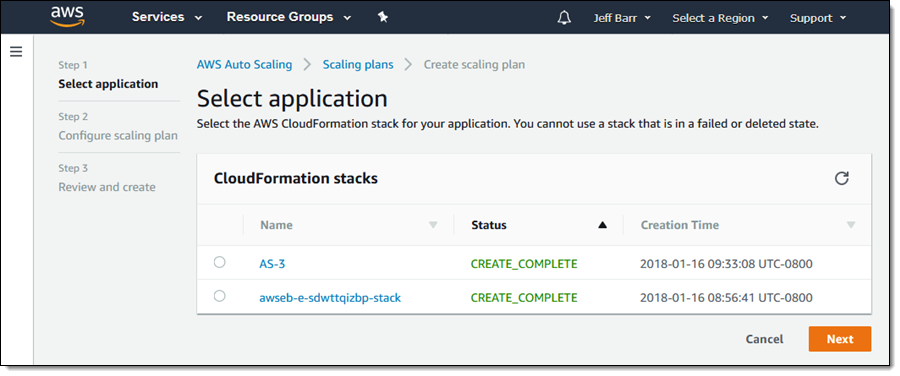
Behind the scenes, Elastic Beanstalk applications are always launched via a CloudFormation stack. In the screen shot above, awseb-e-sdwttqizbp-stack is an Elastic Beanstalk application that I launched.
I can click on any stack to learn more about it before proceeding:
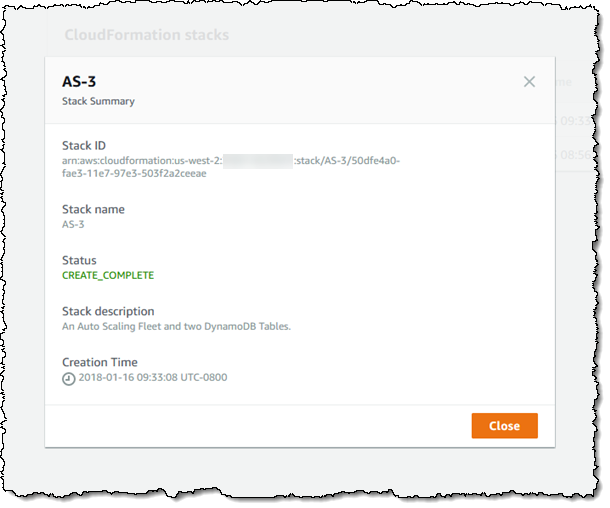
I select the desired stack and click on Next to proceed. Then I enter a name for my scaling plan and choose the resources that I’d like it to include:

I choose the scaling strategy for each type of resource:
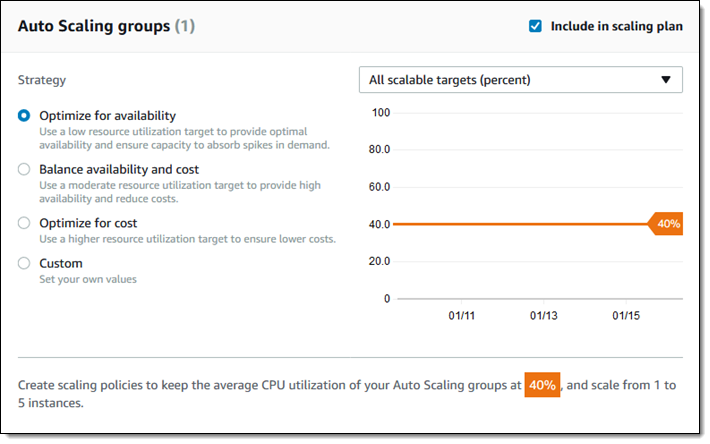
After I have selected the desired strategies, I click Next to proceed. Then I review the proposed scaling plan, and click Create scaling plan to move ahead:
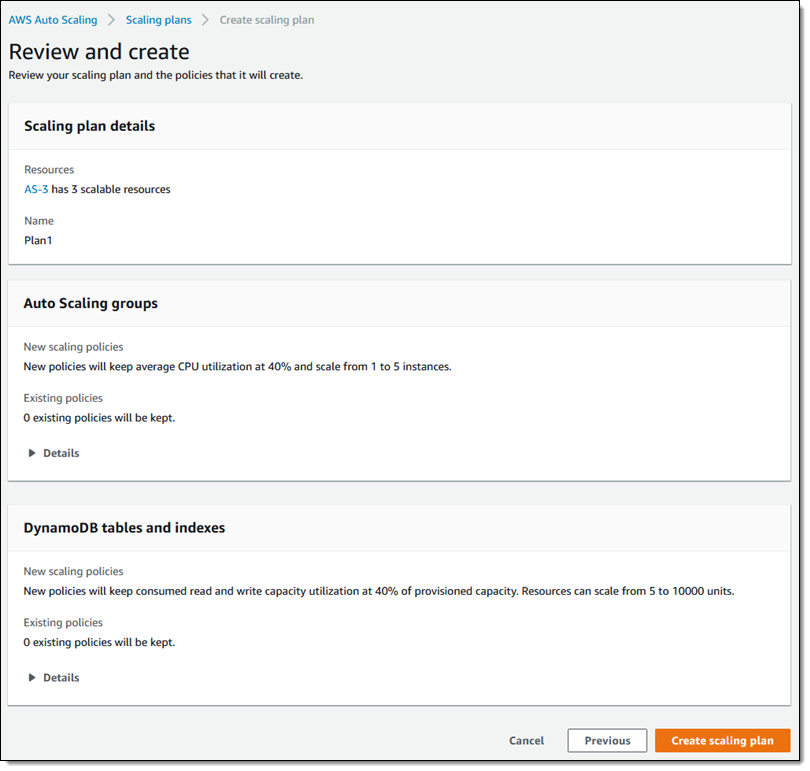
The scaling plan is created and in effect within a few minutes:

I can click on the plan to learn more:
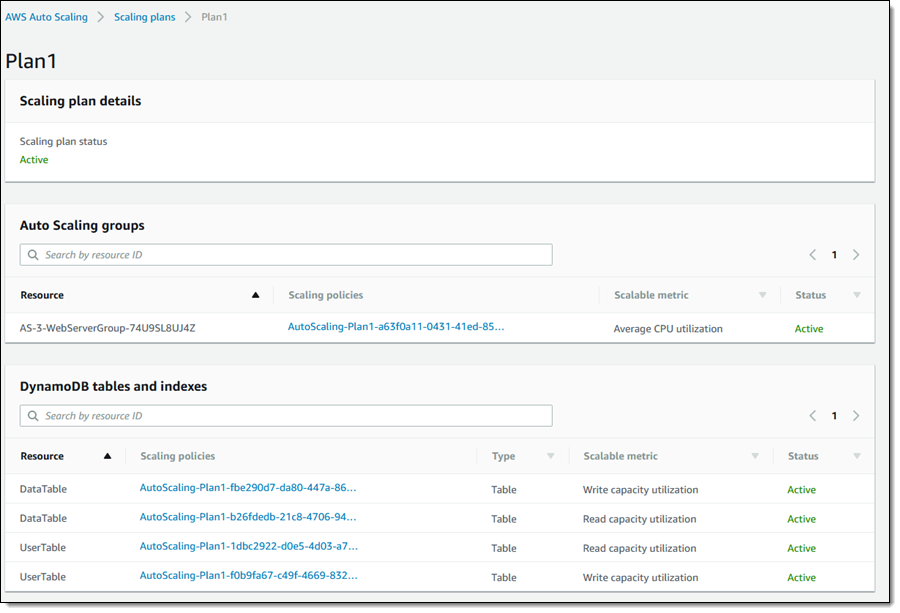
I can also inspect each scaling policy:
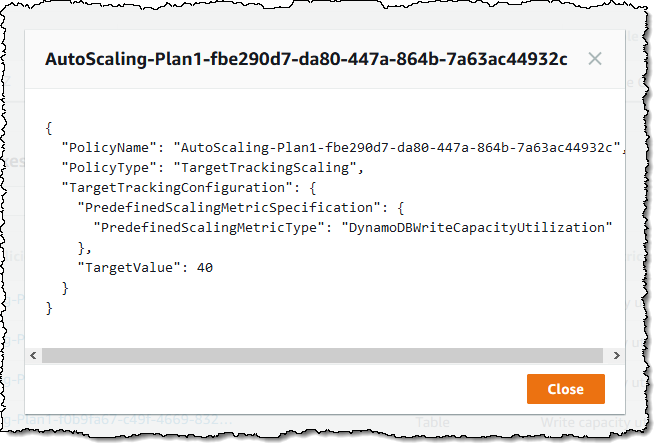
I tested my new policy by applying a load to the initial EC2 instance, and watched the scale out activity take place:

I also took a look at the CloudWatch metrics for the EC2 Auto Scaling group:
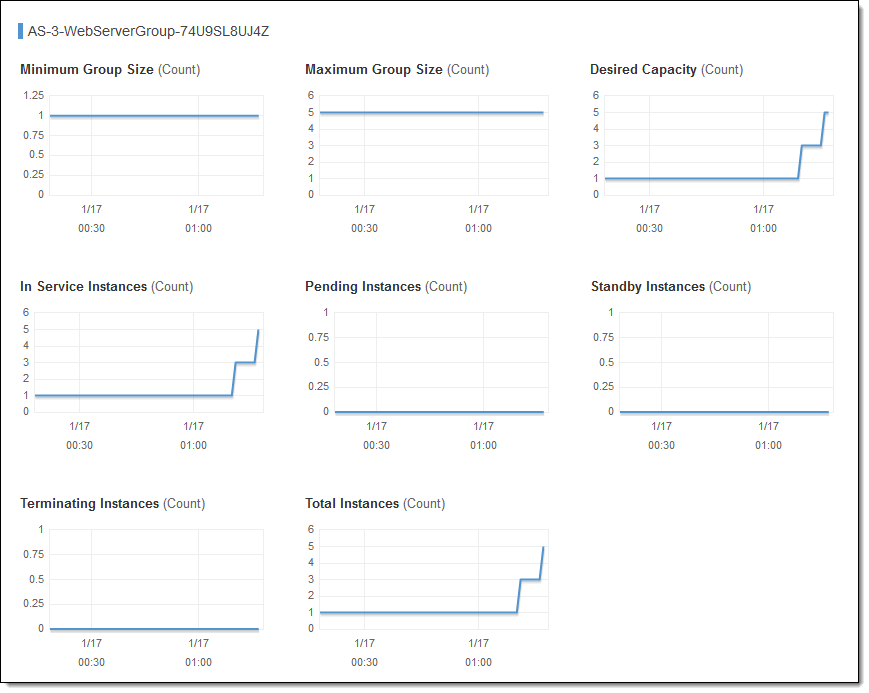
Available Now
We are launching AWS Auto Scaling today in the US East (N. Virginia), US East (Ohio), US West (Oregon), Europe (Ireland), and Asia Pacific (Singapore) Regions today, with more to follow. There’s no charge for AWS Auto Scaling; you pay only for the CloudWatch Alarms that it creates and any AWS resources that you consume.
As is often the case with our new services, this is just the first step on what we hope to be a long and interesting journey! We have a long roadmap, and we’ll be adding new features and options throughout 2018 in response to your feedback.
— Jeff;
相關推薦
New AWS Auto Scaling – Unified Scaling For Your Cloud Applications
I’ve been talking about scalability for servers and other cloud resources for a very long time! Back in 2006, I wrote “This is the new world of sc
AWS Marketplace: Okta Identity Management for the Cloud
Product Description Okta is an integrated identity and mobility management service. Built from the ground
Ask HN: How fast is an AWS auto scaling group?
I have been struggling to find an answer to this simple question. What is the rate at which new instances can be created in an autoscaling group?Let's say
Questions fréquentes (FAQ) AWS Auto Scaling
Q : Quand faut-il utiliser AWS Auto Scaling par rapport à Amazon EC2 Auto Scaling ? Utilisez AWS Auto Scaling pour configurer le d
AWS Auto Scaling Pricing
There is no additional charge for AWS Auto Scaling. You pay only for the AWS resources needed to run your applications and Amazon CloudWatch monit
Tarification AWS Auto Scaling
Il n'y a pas de frais supplémentaires pour AWS Auto Scaling. Vous ne payez que les ressources AWS requises pour exécuter vos applications, ainsi q
AWS Auto Scaling Resources
Amazon Web Services is Hiring. Amazon Web Services (AWS) is a dynamic, growing business unit within Amazon.com. We are currently hiring So
AWS Auto Scaling Features
Predictive Scaling predicts future traffic, including regularly-occurring spikes, and provisions the right number of EC2 instances in advance
AWS Auto Scaling 常見問題
問:何時應使用 AWS Auto Scaling?何時又該使用 Amazon EC2 Auto Scaling? 您應該使用 AWS Auto Scaling 來管理跨多項服務的多個資源的擴充套件。藉助 AWS Auto Scaling,您可以使用預定義的擴充
New AWS SDK for JavaScript – Developer Preview
We’re happy to announce the developer preview of the AWS SDK for JavaScript, version 3. This version of the SDK is a major rewrite of the 2.x code
New AWS Deep Learning AMIs for Machine Learning Practitioners
We’re excited to announce the availability of two new versions of the AWS Deep Learning AMI. The first is a Conda-based AMI with separate Python e
How to Enable LDAPS for Your AWS Microsoft AD Directory
Starting today, you can encrypt the Lightweight Directory Access Protocol (LDAP) communications between your applications and AWS Directory Servic
Enable a DHCP Options Set for Your AWS Directory Service Directory
Amazon Web Services is Hiring. Amazon Web Services (AWS) is a dynamic, growing business unit within Amazon.com. We are currently hiring So
New – AWS Marketplace for the U.S. Intelligence Community
AWS built and now runs a private cloud for the United States Intelligence Community. In order to better meet the needs of this unique comm
hadoop WARN util.NativeCodeLoader: Unable to load native-hadoop library for your platform... using builtin-java classes where applicable
for bsp native del code warn you port uil 這個waring 信息是可以忽略的。下面是解決方案 在hadoop-env.sh中添加 export HADOOP_OPTS="$HADOOP_OPTS -Djava.library.p
Hadoop安裝—— WARN util.NativeCodeLoader: Unable to load native-hadoop library for your platf
lib64 AD there 會有 就會 pos body gpo csharp 今天在安裝hadoop完成測試創建用戶目錄失敗在網上找到了原因記錄一下原文地址 http://blog.csdn.net/l1028386804/article/details/5153861
Hadoop--Unable to load native-hadoop library for your platform... using builtin-java classes where applicable Starting namenodes on [localhost]
The ice ddr bsp uic cep icu pub pat Unable to load native-hadoop library for your platform... using builtin-java classes where applic
論文閱讀之FaceNet: A Unified Embedding for Face Recognition and Clustering
深度 clust 識別 傳統 創新 圖像 進行 rec 大創 名稱:FaceNet: A Unified Embedding for Face Recognition and Clustering 時間:2015.04.13 來源:CVPR 2015 來自谷歌的
